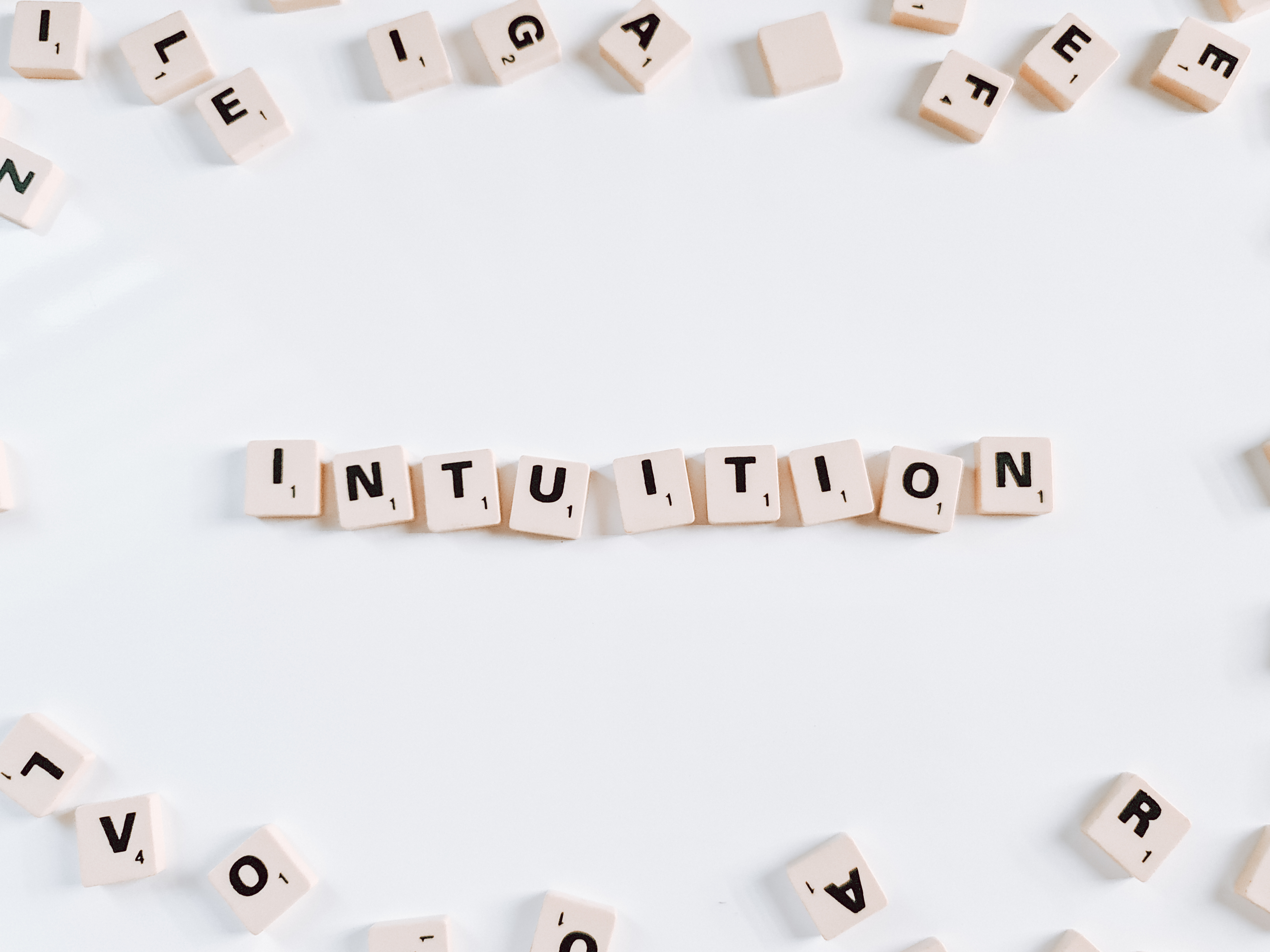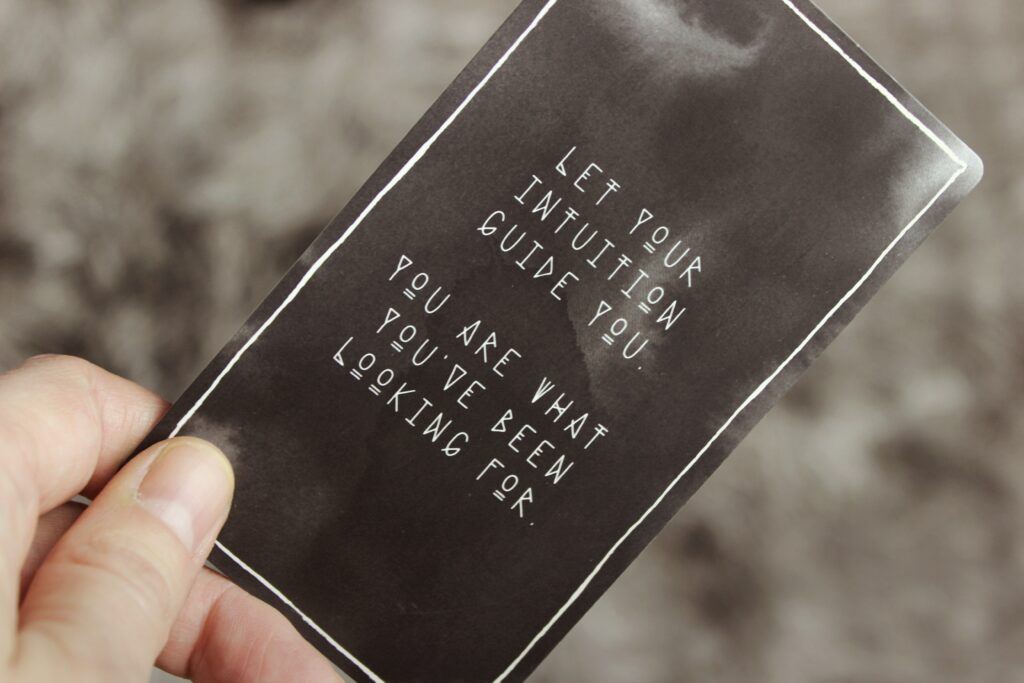In the realm of holistic health, an ancient practice known as intuitive healing has emerged as a powerful tool for self-discovery and transformation. As you embark on a journey to unlock the secrets of your body’s wisdom, you will learn to attune yourself to its subtle signals and tap into a wealth of intuitive guidance. By deepening your connection with your body and learning to interpret its messages, you will unveil a remarkable source of healing and empowerment that has been within you all along. Step into the world of intuitive healing and embrace the path to self-awareness and well-being.
Understanding Intuitive Healing
Intuitive healing is a holistic approach to healing that focuses on connecting with and listening to your inner wisdom. It recognizes that the body has an inherent ability to heal itself and that by tuning in to your body’s signals and messages, you can facilitate this healing process. Intuitive healing takes into account the mind, body, and spirit, acknowledging that they are all interconnected and play a role in our overall well-being.
What is Intuitive Healing?
Intuitive healing is a practice that involves tapping into your intuition and using it as a guide for healing. It involves listening to your body’s signals, trusting your gut instinct, and understanding the language of your body. In intuitive healing, the emphasis is on self-awareness, self-reflection, and self-empowerment. It encourages you to take an active role in your healing journey by becoming more attuned to your body’s needs and desires.

The Principles of Intuitive Healing
At the core of intuitive healing are several key principles that guide the practice. These principles emphasize the interconnectedness of the mind, body, and spirit and the importance of listening to and honoring your body’s wisdom. The principles of intuitive healing include:
-
Holistic Approach: Intuitive healing recognizes that healing is a multidimensional process that involves addressing the physical, emotional, mental, and spiritual aspects of a person.
-
Inner Wisdom: Intuitive healing acknowledges that your body has its own innate wisdom and knows what it needs to heal. By tapping into this wisdom, you can gain valuable insights and guidance for your healing journey.
-
Self-Awareness: Intuitive healing encourages you to cultivate self-awareness and develop a deeper understanding of yourself. By becoming more in tune with your emotions, thoughts, and physical sensations, you can better understand what your body needs to heal.
-
Trusting Intuition: Intuitive healing emphasizes the importance of trusting your intuition and inner guidance. Your intuition can serve as a valuable tool for navigating your healing journey and making decisions that are aligned with your highest good.
-
Personal Empowerment: Intuitive healing empowers you to take an active role in your healing process. It encourages you to trust in your own abilities and make choices that support your well-being.
The Benefits of Intuitive Healing
Intuitive healing offers a wide range of benefits for both the body and mind. Some of the key benefits of intuitive healing include:
-
Increased Self-Awareness: By practicing intuitive healing, you can develop a deeper understanding of yourself and your body’s needs. This heightened self-awareness can lead to improved overall well-being and a greater sense of inner peace.
-
Enhanced Intuition: Intuitive healing helps to sharpen your intuition and develop a stronger connection to your inner wisdom. This can support you in making better decisions, both in your healing journey and in other areas of your life.
-
Emotional Healing: Intuitive healing provides a space for emotional healing and helps you to process and release stored emotions. By allowing emotions to surface and expressing them in a healthy way, you can experience a greater sense of emotional well-being.
-
Physical Well-being: Intuitive healing can contribute to improved physical health by helping you become more attuned to your body’s needs. By listening to your body and providing it with what it needs, you can support its natural healing processes.
-
Stress Reduction: Intuitive healing techniques, such as meditation and mindfulness, can help you manage stress more effectively. By cultivating a sense of inner calm and balance, you can reduce the impact of stress on your overall well-being.

Different Approaches to Intuitive Healing
There are various approaches to intuitive healing, each with its own unique techniques and practices. Some of the different approaches to intuitive healing include:
-
Energy Healing: Energy healing involves working with the body’s energy systems to restore balance and promote healing. Techniques such as Reiki, acupuncture, and Qi Gong are commonly used in energy healing.
-
Chakra Balancing: Chakra balancing focuses on aligning and balancing the body’s energy centers, known as chakras. This can help to restore harmony to the mind, body, and spirit.
-
Crystal Healing: Crystal healing utilizes the energetic properties of crystals to facilitate healing. Different crystals have different properties and can be used to address specific imbalances or promote general well-being.
-
Sound Healing: Sound healing uses vibrational frequencies to promote healing and relaxation. This can involve listening to soothing music, chanting, or using instruments such as singing bowls or tuning forks.
-
Intuitive Bodywork: Intuitive bodywork combines bodywork techniques, such as massage or reflexology, with intuitive guidance. This can help to release tension and promote healing on physical, emotional, and energetic levels.
Each approach to intuitive healing has its own unique benefits and can be tailored to meet individual needs and preferences. It’s important to explore different approaches and find what resonates most with you.
Developing Your Intuition
Developing your intuition is a key aspect of intuitive healing. Your intuition serves as a guide, providing valuable insights and guidance on your healing journey. Here are some techniques to help you develop your intuition:
Recognizing Your Body’s Signals
Start by paying attention to the signals and messages your body sends you. Notice how your body reacts in different situations and become aware of any physical sensations or intuitive nudges that arise.
Practicing Mindfulness and Self-Awareness
Cultivating mindfulness and self-awareness can help you tune in to your intuition. Practice being fully present in the moment and observe your thoughts, emotions, and physical sensations without judgment.
Exploring Meditation and Visualization
Meditation and visualization are powerful tools for connecting with your intuition. Set aside time each day to quiet your mind, focus on your breath, and visualize yourself tapping into your inner wisdom.
Embracing Self-Reflection and Journaling
Engage in self-reflection practices, such as journaling, to deepen your self-awareness and gain insights into your intuition. Write down your thoughts, feelings, and any intuitive impressions that arise.
By regularly practicing these techniques, you can strengthen your intuition and develop a deeper connection to your inner guidance.

Connecting with Your Body’s Wisdom
Your body holds a wealth of wisdom and can provide valuable insights and guidance for your healing journey. Here are some ways to connect with your body’s wisdom:
Building a Strong Mind-Body Connection
Cultivate a strong mind-body connection by paying attention to your body’s signals and responding to its needs. Engage in activities that nurture both your physical and mental well-being, such as exercise, proper nutrition, and stress management.
Listening to Your Body’s Messages
Be attentive to the messages your body sends you. Notice any physical sensations, discomfort, or changes in energy levels. Your body is constantly communicating with you, so take the time to listen and respond accordingly.
Trusting Your Gut Instinct
Your gut instinct, also known as your intuition, is a powerful tool for decision-making and healing. Learn to trust your gut and follow its guidance, even if it goes against conventional wisdom or logic. Your intuition often knows what’s best for you.
Understanding the Language of Your Body
Your body communicates with you through sensations, emotions, and physical symptoms. Take the time to understand the language of your body and what different signals may mean. This will help you to better respond to its needs and promote healing.
Connecting with your body’s wisdom is an ongoing process that requires patience and practice. By deepening your awareness of your body and listening to its messages, you can tap into a powerful source of healing and guidance.
Techniques for Intuitive Healing
There are various techniques and modalities that can be used in intuitive healing. Here are some common ones:
Energy Healing
Energy healing involves working with the body’s energy systems to restore balance and promote healing. This can be done through various techniques such as Reiki, acupuncture, and Qi Gong.
Chakra Balancing
Chakra balancing focuses on aligning and balancing the body’s energy centers, known as chakras. This can be done through meditation, visualization, or energy healing techniques.
Crystal Healing
Crystal healing utilizes the energetic properties of crystals to facilitate healing. Different crystals have different properties and can be used to address specific imbalances or promote general well-being.
Sound Healing
Sound healing uses vibrational frequencies to promote healing and relaxation. This can involve listening to soothing music, chanting, or using instruments such as singing bowls or tuning forks.
Intuitive Bodywork
Intuitive bodywork combines bodywork techniques, such as massage or reflexology, with intuitive guidance. This can help to release tension and promote healing on physical, emotional, and energetic levels.
These techniques can be used individually or in combination to support your healing journey. It’s important to find what resonates with you and seek out qualified practitioners if needed.
Honoring Emotional Release
Emotional release is an essential part of the healing process. Here are some ways to honor and support the release of emotions:
Allowing Emotions to Surface
Give yourself permission to feel and express your emotions. Allow them to arise without judgment or suppression. Creating a safe space for emotional healing can help facilitate the release of pent-up emotions.
Creating a Safe Space for Emotional Healing
Create a safe and supportive environment where you feel comfortable expressing your emotions. This may involve finding a trusted friend or therapist to talk to or engaging in activities that promote emotional healing, such as journaling or art therapy.
Expressing and Releasing Emotions
Find healthy outlets for expressing and releasing your emotions. This could include crying, screaming into a pillow, engaging in physical activity, or engaging in creative expression. Experiment with different methods and find what works best for you.
Seeking Professional Support if Necessary
If you’re struggling to process or release your emotions on your own, don’t hesitate to seek professional support. A trained therapist or counselor can provide guidance, tools, and a safe space for emotional healing.
Honoring emotional release is an integral part of the healing process. By allowing yourself to express and release emotions, you can experience a greater sense of emotional well-being and facilitate healing on a deeper level.
Embracing Intuitive Nutrition
Intuitive nutrition involves listening to your body’s cravings and cues to guide your food choices. Here’s how you can embrace intuitive nutrition:
Listening to Your Body’s Cravings and Cues
Pay attention to your body’s cravings and cues for specific foods. These cravings may indicate that your body is in need of certain nutrients. Trust your body and nourish it accordingly.
Choosing Whole and Nourishing Foods
Opt for whole, nutrient-dense foods that support your overall well-being. Focus on incorporating a variety of fruits, vegetables, whole grains, lean proteins, and healthy fats into your diet.
Exploring Intuitive Eating Practices
Intuitive eating is a mindful approach to eating that involves listening to your body and honoring its hunger and fullness cues. It emphasizes a non-restrictive approach to food and encourages you to make choices that align with your body’s needs.
Understanding the Mind-Body-Food Connection
Acknowledge the powerful connection between your mind, body, and the food you consume. Consider how different foods make you feel mentally, emotionally, and physically, and make conscious choices that support your overall well-being.
Embracing intuitive nutrition allows you to nourish your body in a way that feels best for you. By listening to your body’s cues and choosing foods that support your well-being, you can foster a healthy and intuitive relationship with food.
Healing Through Movement
Movement is an integral part of intuitive healing. Here are some ways to incorporate movement into your healing journey:
Finding Joy in Physical Activities
Engage in physical activities that bring you joy and make you feel alive. Whether it’s dancing, hiking, or practicing yoga, find forms of movement that resonate with you and make you feel good.
Exploring Different Modalities of Movement
Be open to exploring different modalities of movement. Try out various activities such as tai chi, Pilates, or martial arts to find what resonates with you and supports your healing process.
Bringing Mindfulness to Your Exercise Routine
Approach your exercise routine with mindfulness and presence. Focus on the sensations in your body, the rhythm of your breath, and the joy of movement. This can help to deepen your connection to your body and promote healing.
Using Movement as a Form of Therapy
Consider using movement as a form of therapy. Dance therapy, for example, combines movement with emotional expression and can be a powerful tool for healing trauma and releasing emotions.
Movement can be a powerful catalyst for healing. By incorporating joyful and mindful movement into your healing journey, you can nurture your body and promote overall well-being.
The Power of Intuitive Rest
Rest and relaxation are essential components of the healing process. Here are some ways to embrace intuitive rest:
Prioritizing Rest and Relaxation
Make rest and relaxation a priority in your daily life. Set aside time each day for activities that promote rest, whether it’s taking a bath, reading a book, or practicing gentle yoga.
Tuning in to Your Body’s Need for Rest
Listen to your body’s signals and honor its need for rest. Pay attention to feelings of fatigue, exhaustion, or burnout, and take the necessary steps to recharge and rejuvenate.
Exploring Different Forms of Restorative Practices
Explore different forms of restorative practices to find what resonates with you. This may include activities such as meditation, breathing exercises, massage, or spending time in nature.
Creating a Balanced Lifestyle
Strive for balance in your life by incorporating rest and relaxation along with movement and activity. Finding a harmonious balance between rest and action can support your overall well-being and promote healing.
Intuitive rest allows you to recharge and rejuvenate your mind, body, and spirit. By prioritizing rest and relaxation and finding what works best for you, you can create a balanced and nurturing lifestyle.
Intuitive Healing and Self-Care
Intuitive healing and self-care go hand in hand. Here’s how you can incorporate self-care practices into your intuitive healing journey:
Making Self-Care a Priority
Prioritize self-care in your daily life. Recognize that taking care of yourself is essential for your overall well-being and your ability to heal.
Creating a Self-Care Routine
Establish a self-care routine that works for you. This may involve setting aside dedicated time each day for activities that nurture and recharge you, such as taking a bath, practicing mindfulness, or engaging in creative expression.
Identifying and Addressing Your Own Needs
Take the time to identify and address your own needs. Reflect on what brings you joy, what supports your well-being, and what you need to feel nourished and cared for.
Nurturing Your Mind, Body, and Soul
Engage in practices that nurture your mind, body, and soul. This may include activities such as journaling, practicing gratitude, spending time in nature, or engaging in hobbies that bring you joy.
Intuitive healing is deeply intertwined with self-care. By prioritizing self-care, you can create a nurturing and supportive environment for your healing journey.
Embracing Your Inner Healer
Embracing your inner healer is about recognizing and cultivating your own healing abilities. Here’s how you can embrace your inner healer:
Believing in Your Own Healing Abilities
Believe that you have the power to heal yourself. Trust in your body’s wisdom and its innate ability to heal. Cultivate a positive and empowering mindset that supports your healing journey.
Developing Trust in Yourself
Develop trust in yourself and your intuition. Trust that you know what’s best for your own healing journey and that you have the ability to make decisions that support your well-being.
Honoring Your Intuition
Give yourself permission to listen to and honor your intuition. Your intuition is a valuable tool for guiding your healing process. Trust the messages and guidance that arise from within.
Fostering a Positive and Healing Mindset
Cultivate a positive and healing mindset. Practice self-compassion, gratitude, and positive affirmations. Surround yourself with supportive and uplifting people and resources that nourish your mind, body, and spirit.
By embracing your inner healer, you can tap into your own innate wisdom and power for healing. Trust in yourself, honor your intuition, and foster a positive and healing mindset as you navigate your healing journey.
In conclusion, intuitive healing is a holistic approach to healing that emphasizes the connection between the mind, body, and spirit. By developing your intuition, connecting with your body’s wisdom, and embracing various techniques, you can promote healing on multiple levels. Through honoring emotional release, embracing intuitive nutrition, engaging in healing movement and rest, and practicing self-care, you can nurture your mind, body, and soul. By believing in your own healing abilities, trusting yourself, honoring your intuition, and fostering a positive and healing mindset, you can embrace your inner healer and embark on a transformative healing journey.




